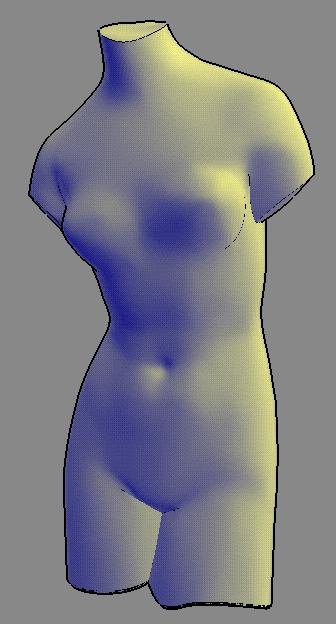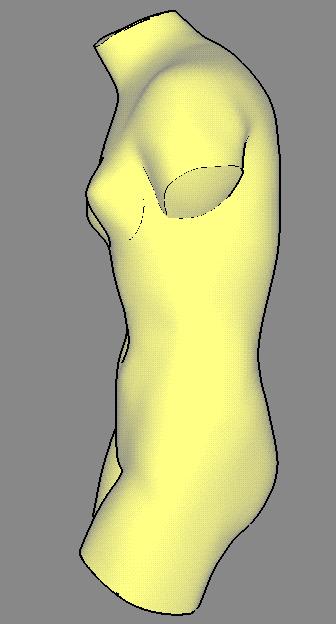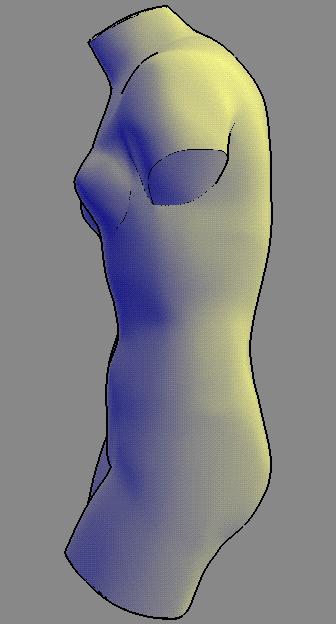


|
The shading models presented in Section 3.2 are used to full advantage if the surface color varies completely from cool to warm. This involves moving the object and not the viewpoint or the light. As seen in Figure 5, moving the object while holding the camera and light positions constant presents more shape information and surface detail. For this reason our interface rotates the object rather than the viewer, leaving the background, light, and viewer in place.



|
When multiple objects appear in a scene, illustrators often use different shading across each object, inferring that each object has its own light, which does not affect other objects in the environment, similar to the virtual lights described by Walter et al. [26]. For example, two objects in a scene may be lit differently to draw attention to different attributes of each object. If this were accomplished by adding two lights to the environment, the multiple highlights would be confusing.